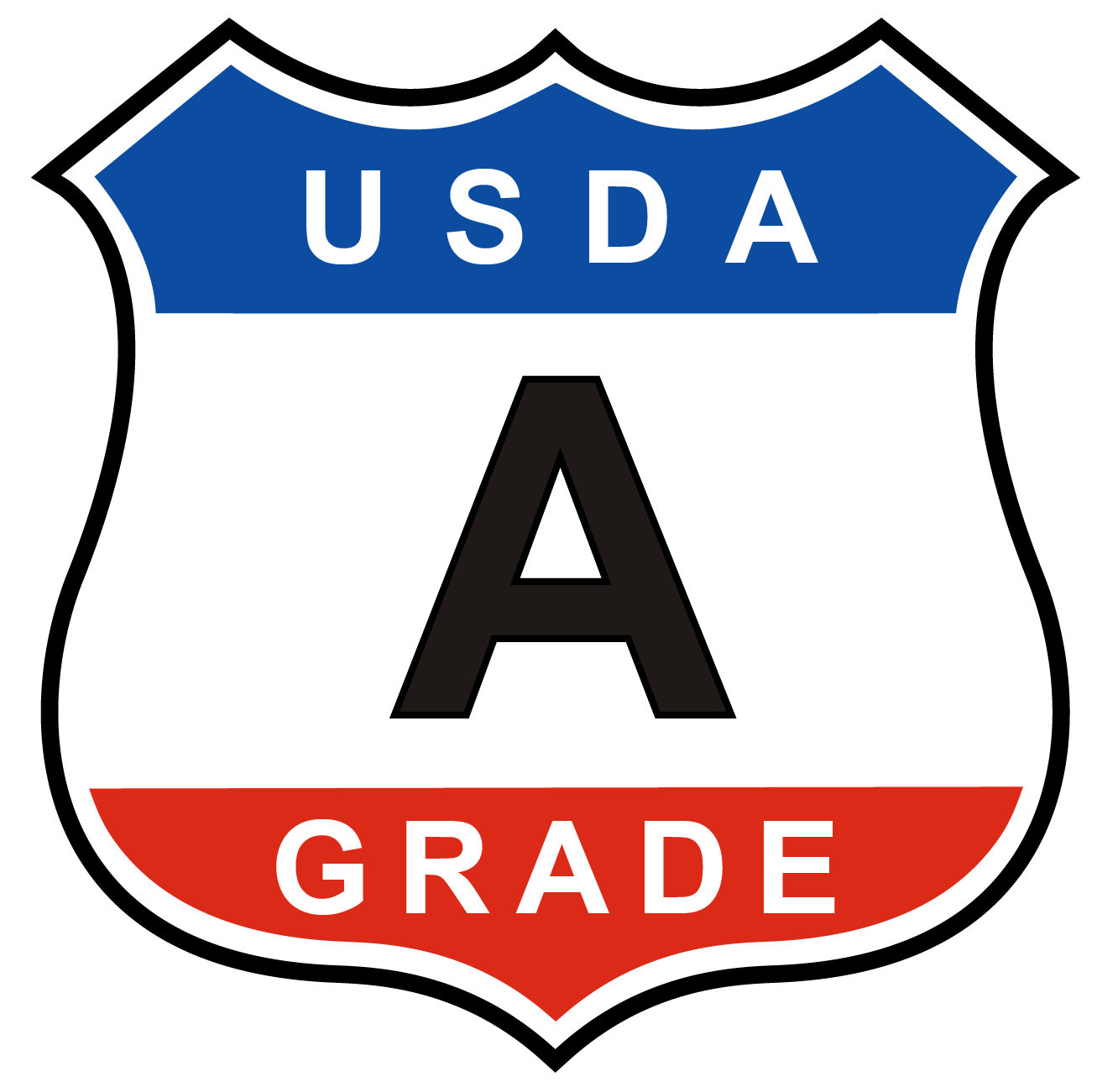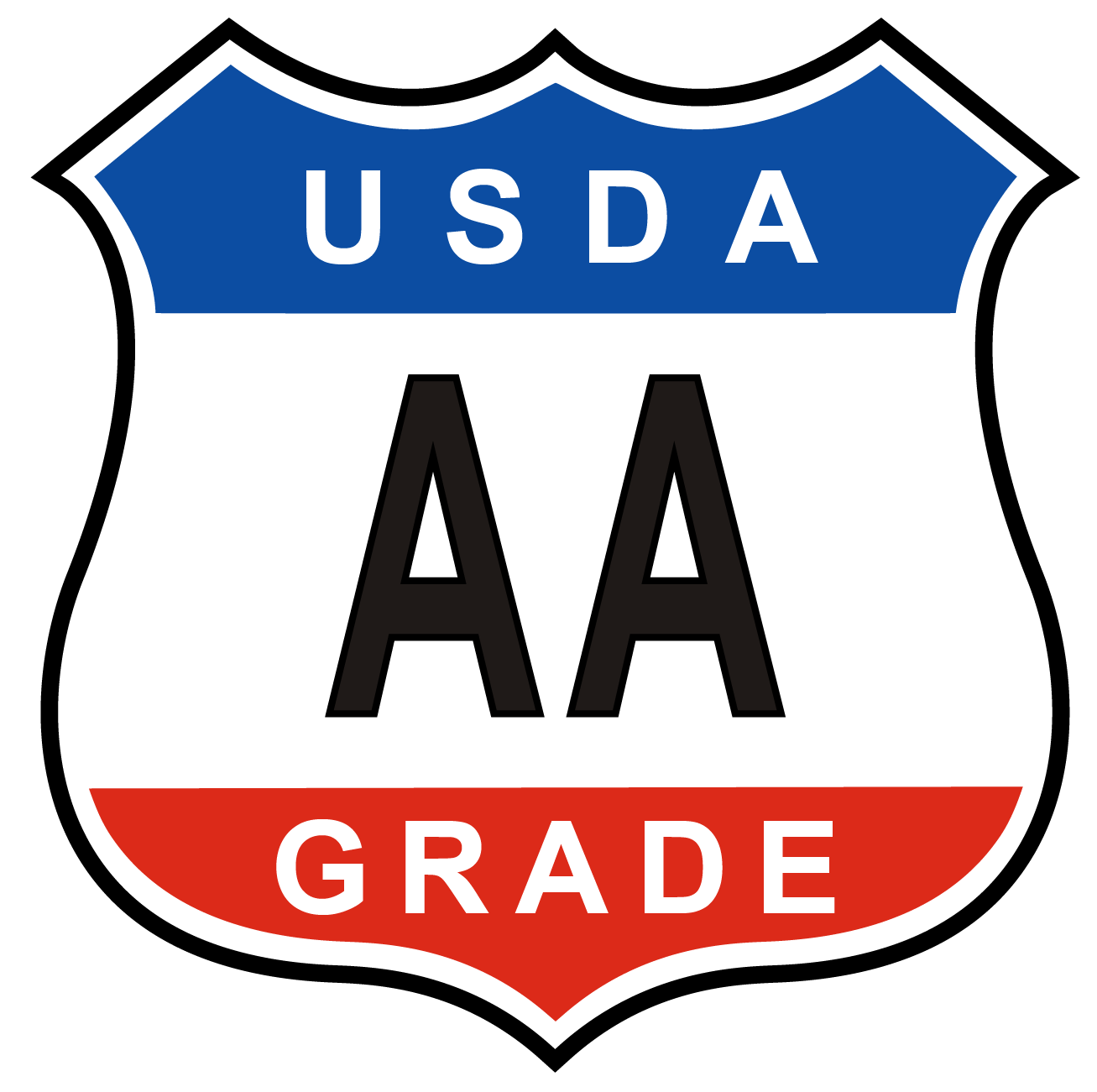Question: What is USDA grading service?
Answer: USDA’s Agricultural Marketing Service, through the Livestock and Poultry Program’s Quality Assessment Division, offers a voluntary program which provides for the official grading of eggs in accordance with the U.S. Grade Standards for the Voluntary Grading of Shell Eggs (7 CFR Part 56) and the United States Standards, Grades, and Weight Classes for Shell Eggs (pdf) (AMS 56). Under this program, USDA graders continuously monitor the grading and packing of eggs to help ensure that they meet the applicable quality and size standards. Plant processing equipment, facilities, sanitation and operating procedures are also checked and verified according to established requirements. Eggs packed under this program are eligible to carry the USDA grademark.
Grading provides for a standardized means of describing the marketability of a particular food product. Through the application of uniform grade standards, shell eggs can be classified according to a range of quality characteristics. Buyers, sellers, and consumers alike can communicate about these characteristics through a common language provided by the USDA grades. USDA quality grade standards for shell eggs define and measure quality in terms of the appearance and condition of the shell as well as the interior quality of the yolk and albumen (white). The final quality rating (U.S. Grade AA, A, or B) is based on the factor with the lowest rating.
Only eggs processed under the supervision of a USDA grader are eligible for certification and application of the USDA grademark. Officially graded shell eggs that pass this examination and evaluation process are eligible for the grademark and may be identified as USDA Grade AA, A, or B.
Examples of the USDA grademark (shield):


Question: Why do some egg cartons contain the USDA grademark (shield) on them, while others do not? Aren't all eggs graded?
Answer: Eggs in cartons that do not contain the USDA grademark (shield) are not required to meet USDA’s facility, sanitation, and labeling requirements (7 CFR Part 56) and do not undergo the USDA grading and certification process in accordance with the U.S. Grade Standards, Grades, and Weight Classes for Shell Eggs (pdf) (AMS 56). Non-grademarked product is not required to meet U.S. Grade Standards for Grade AA or A eggs. However, all product in domestic commerce must meet U.S. Grade B Standards.
Question: I’ve heard brown eggs are better for you than white eggs, is that true?
Answer: Shell color does not affect the quality of the egg and is not a factor in the U.S. Standards, Grades, and Weight Classes for Shell Eggs (AMS 56). Eggs are sorted for color and marketed as either “white” or “brown” eggs.
On average, brown eggs are bigger in size than white eggs, due to the breed of chicken laying the eggs. Brown eggs cost more to produce and is usually reflected in the cost per dozen at retail.
Question: What is the difference between Free Range and Cage Free eggs?
Answer: Eggs packed in USDA grademarked consumer packages labeled as free range must be produced by hens that are able to roam vertically and horizontally in indoor houses, and have access to fresh food and water, and continuous access to the outdoors during their laying cycle. The outdoor area may be fenced and/or covered with netting-like material. Housing systems vary from farm-to-farm, and can include multi-tier aviaries. They must allow hens to exhibit natural behaviors and include enrichments such as scratch areas, perches and nests. Hens must have access to litter, protection from predators and be able to move in a barn in a manner that promotes bird welfare.
Eggs packed in USDA grademarked consumer packages labeled as cage free are laid by hens that are able to roam vertically and horizontally in indoor houses, and have access to fresh food and water. Cage-free systems vary from farm-to-farm, and can include multi-tier aviaries. They must allow hens to exhibit natural behaviors and include enrichments such as scratch areas, perches and nests. Hens must have access to litter, protection from predators and be able to move in a barn in a manner that promotes bird welfare.
Question: Are Free Range or Cage Free eggs nutritionally better than eggs from hens in a caged environment?
Answer: Free Range or Cage Free eggs denote the environment in which the laying hens were housed in. Currently, USDA does not have definitive scientific data stating a nutritional difference in egg nutrition, due to hen housing.
Question: What do all the numbers listed on the side of my egg carton represent?
Answer: All cartons, overwrap, and types of consumer packages bearing the USDA grademark require legible lot numbering on the consumer package. The lot number is the consecutive day of the year in which the eggs were packed into the carton, and consists of three digits, such as 042, 155, 267, etc. Since the lot number represents the consecutive day of the year, eggs packed into the container on January 1st would be listed as 001. View the Day of the Year chart (pdf)
Additionally, all cartons, overwrap, and types of consumer packages bearing the USDA grademark require the facility or plant number to be listed on the consumer package. The facility or plant number is preceded by a “P” with three or four digits listed, such as P-1234, P-2540, or P-785. View the plant directory of USDA voluntary shell egg grading facilities
Expiration code dating, such as “Sell By” or “Use By” is not required to be listed on egg containers. Therefore, some egg containers will list the expiration date, while others may not.
Question: Are eggs safe to eat after the Use By or Sell By date has expired?
Answer: The Use By or Sell By dates stamped on the end of an egg carton denotes the period of optimum egg quality. As eggs age, the yolk membranes and tissues weaken and/or moisture is absorbed from the albumen (white). As a result, the yolk begins to flatten and the albumen becomes watery. This is indicative of a Grade B, quality egg.
For baking purposes, a higher quality egg (Grade AA or A) is preferred. For hard-boiling purposes, a lower quality egg (Grade B) is preferred.
Additionally, retailers utilize the Use By or Sell By dates for stock rotation or inventory control.
Question: If I am a shell egg producer, distributor, or carton manufacturer and I want to utilize the pre-printed, USDA grademark on a shipping case label, shell egg carton/container, or shipping case, where can I get a copy of the grademarks?
Answer: Access high resolution graphic files of the grademarks and shields on the grade labels for egg products page.
Question: If I am a shell egg producer, distributor, or a carton manufacturer where can I get information on USDA labeling requirements for shell egg containers?
Answer: A guidance document has been created to help producers, distributors, and carton manufacturers better understand the basics of shell egg labeling requirements when utilizing the USDA grading service. View the USDA Grademarked Product Label Submission Checklist (pdf)

